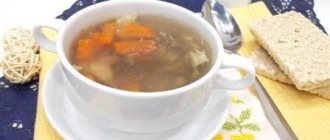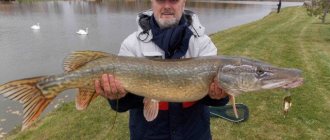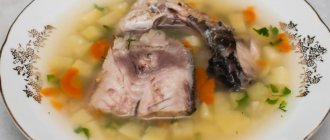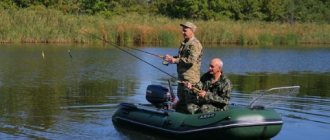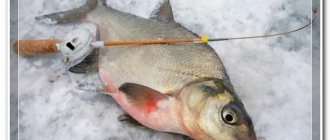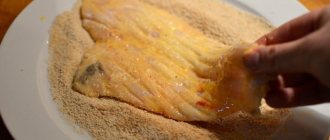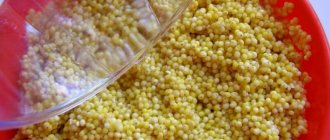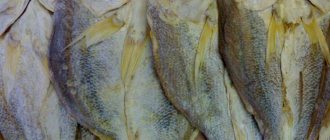- Marine
- Whole carcasses
- In a spicy decoction
- For diet
- Preparing the fish
- How to cook correctly Cooking methods
- Ingredient Selection
- Cooking tips
Suitable for boiling in broth and steaming: pike perch, pike, whitefish, halibut, sole.
Herring species are least suitable due to their specific taste. It is better to salt them, fry or smoke them.
From red rocks
used frequently
- salmon,
- pink salmon,
- chinook salmon
- coho salmon,
- trout.
Tuna is slightly poached for some recipes, but if overcooked, it becomes tough.
Salmon fillets
The density of the pulp determines which fish is boiled in broth and which is steamed. If the flesh is tender, like halibut or sole, then it is more rational to steam it. Fish with dense flesh can be boiled in broth and steamed; it is versatile in preparation. Sometimes the pieces are placed in a gauze bag to ensure that they do not fall apart during the process.
Small fish are boiled only to obtain broth, with rare exceptions - for dietary nutrition. It is customary to fry or bake red mullet, smelt, capelin or peled. Their advantage is their crispy crust, but if desired, they can be boiled with herbs and vegetables. It takes a few minutes to cook small sea fish, and a little longer for river fish.
The benefits of fish
Fish is a source of high-quality protein and is quickly absorbed by the body. If it takes about three or four hours to digest the meat, then the fish will “dissolve” in two. Therefore, it is recommended in dietary nutrition even for evening meals. Proteins keep you feeling full for a long time. The brain “gives a signal” not to store anything on the sides or butt.
I think many people have heard about the longevity of the people of Japan. They have virtually no problems with the thyroid gland. Excellent vision and smooth skin last until old age. Just look at the photo - cheerful, youthful people. Scientists have found that the cause of health was the consumption of large amounts of sea fish. The composition of your favorite product includes the following benefits:
- fatty amino acids Omega-3, Omega-6;
- vitamins A, D, group B;
- phosphorus;
- zinc;
- iodine;
- calcium.
Regular consumption of seafood reduces the risk of heart disease. The pressure stabilizes. The functioning of the immune system and brain improves. If you don’t want to suffer from dementia in old age, eat fish.
Iodine - saturates the thyroid gland, which has a huge effect on calorie burning and metabolism
Omega-3 fatty acid is a very healthy thing. Without it, the synthesis of other substances in the body is impossible. It maintains normal sensitivity of nerve fibers and participates in muscle contraction. The presence of beneficial Omega-3 acids will have a positive effect on hair, skin, and nails.
Secrets of cooking fish
In order not to spoil the taste of the fish, salting it before cooking is not recommended.
When preparing an appetizer or main course, fill the fish with hot water, using 2 liters of water per kilogram of prepared fish. To ensure uniform cooking, large carcasses are cut into pieces, and small fish are boiled whole.
Be aware that too much water will deteriorate the taste of the fish. Rapid boiling during cooking is also highly undesirable. If possible, use as little cooking water as possible.
Boil sturgeon and catfish in larger pieces, cutting them into portions before serving. These types of fish have a special delicate taste, so try not to use a large amount of spices and seasonings. Preserve its natural taste.
If you are boiling small fish whole, do not put it in very hot water. The temperature difference may cause the skin to burst, and the finished dish will lose its attractiveness. This will also affect the transparency of the broth. Dip the fish, cut into portions, into hot water, and place small fish in boiling water.
Boiled pike perch
Even before cooking, I assumed that this would be a very dietary dish. But my wife insistently asked me to cook more, so I cooked it for everyone. In fact, I can only recommend it to patients on a diet. But for healthy people it’s a little bland. As a result, I ate the pike perch in splendid isolation, I must admit, with pleasure.
Summary:
Already in the hospital I gained additional knowledge about dietary nutrition for gastrointestinal patients. As I assumed, you can only boil or steam non-greasy white fish. This was also shown by my experiment with herring, which I do not regret at all. I will continue to try other types of boiled fish. Bon appetit!!!
Duration of boiling fish depending on the type
Each type of fish, as in the case of meat, requires an individual approach. If bream and sturgeon are cooked for equal periods of time, one of the products, and perhaps both, will be hopelessly spoiled. It is better to follow the recommendations of experts on how to properly cook fish, and not do questionable experiments with it:

- Smelt. It should be cooked for no more than 5 minutes. By over-resting the component, there is a risk of getting very tough meat.
- Pollock, mackerel, capelin and catfish reach the desired state in 8-12 minutes.
- To boil pink salmon (and other red fish with a similar texture), trout or pike perch, you will have to spend up to a quarter of an hour.
- Cod, herring, sterlet and flounder are cooked until cooked within 15-20 minutes. Bream and freshwater pike are processed a little longer.
- Hake and salmon are boiled for at least 25-30 minutes. Carp, cut into small pieces, is cooked for the same amount. But a whole carp will cook for about 45 minutes.
- Sturgeon takes the longest to cook. Even cut into portioned pieces, it will be ready within 1-2 hours, depending on the size of the pieces.
To determine whether the product is ready, you need to try to separate its fins from the carcass. If they come off easily, the component has reached the desired state.
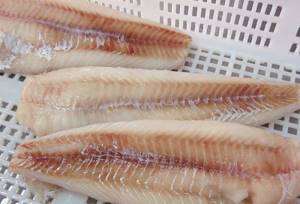
Marine
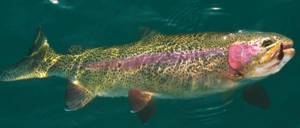
Rainbow trout
Sea fish, cut into pieces, is cooked quickly for 5-15 minutes. A couple a little longer. The most popular dishes are salmon, cod, trout
or
steamed halibut If the carcass is boiled whole, the cooking time increases. Most often, portioned pieces are cooked. You can boil any sea fish, but you will have to make a special broth if it has a specific smell.
The most popular dish is the classic Marseille bouillabaisse. This is a complex recipe made from several varieties of fish and vegetables, and its special feature is the right combination of spices and strong broth.
Suitable Products
Cod liver (230 gram metal can)
480 rub. for 1 piece (retail)
Packaging: 230 g, jar
Order
+ More cod products
Basic recommendations for boiling fish
It doesn’t matter whether you need to boil pink salmon or bream, you should always follow the basic rules for working with the component. Only in this case can you count on the fact that in the end everything will turn out tasty and healthy
- It is better not to salt the workpiece and water until the product is ready. Otherwise, the meat will turn out a little dry.
- It is recommended to cook both river and sea fish in a pan without a lid, so you should not use a slow cooker or double boiler to prepare this product.
Tip: Before cooking fish the traditional way, you should consider cooking it in vegetable broth. With this approach, even ordinary bream can be turned into an exquisite delicacy. And if you use saffron in the process of preparing the broth, the finished dish will have an amazing color and subtle aroma.
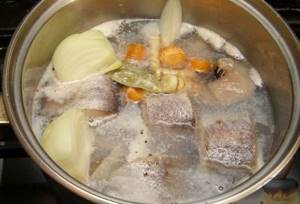
- The water should not be allowed to boil or bubble strongly, as this can lead to deterioration in the texture of the meat and even destruction of pieces or the carcass.
- Small fish are usually cooked whole, while large ones are cut into pieces. If this is not done, the component will not be welded evenly.
- To save time and make the meat juicy, pieces of fish are placed in boiling water. You can’t do this with small carcasses; temperature changes can cause the skin to burst.
- To boil the product tasty, you need to take a minimum amount of water. An abundance of liquid can greatly deteriorate the quality of the component, especially if you need to boil red fish.
- If within a few minutes after the start of cooking the broth becomes cloudy, the product must be removed and the liquid drained. Re-place the component in fresh boiling water and continue processing.

It is necessary to take special care when boiling representatives of the sturgeon and catfish families. It is better to cut them into large pieces and use a minimum amount of seasonings and spices.
https://youtube.com/watch?v=9Qc_1wQUJIs%3Frel%3D0
Cooking fish soup
A traditional Russian dish is ukha, the preparation of which also involves boiling fish. There is nothing complicated in this dish, the main thing is to know how to cook it. You can use different fish. The most delicious is the collected fish soup; large fish are used for it and small fish are used especially for the broth. Small fish do not need to be scaled, but only gutted. The main thing is not to forget to strain the finished broth. For fish soup or fish soup, the head and fins from large fish are often used. The head takes a little longer to cook than the fish itself. It is best to cook the head in a separate pan, and the finished broth should be strained through a sieve or cheesecloth.

Small fish are usually removed from the fish soup, but you can clean it from the bones and rub it through a sieve in the fish soup, then the soup will be even richer and thicker. This type of ear is often called double. It is best to season the soup with black peppercorns, bay leaves and dill.
What kind of fish should not be cooked?
In general, there are no strict contraindications to cooking. But the broth from some types of fish turns out to be bitter. These fish include carp, eel, carp, and lamprey. And some types of fish simply turn out tastier with other cooking methods - for example, crucian carp, smelt.
Also check out our articles on how to cook a specific type of fish:
What kind of fish is best to cook video recipe - step by step
Below you will find a step-by-step video recipe that will help you with preparation.
Research by English scientists
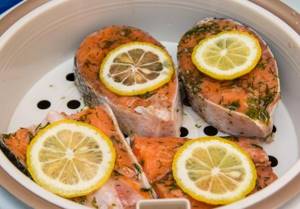
After several years of research, English scientists have proven that those who regularly consume boiled fish instead of fried fish have a 30% reduced risk of developing cardiovascular diseases. Fried fish, which we all love so much, contains carcinogens.
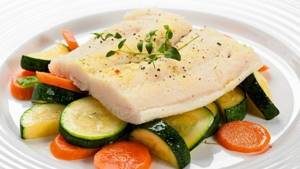
Partial avoidance of fried foods will especially benefit those over 50. Boiled fish contains more polyunsaturated fatty acids, which improve immunity, cleanse blood vessels, and also improve permeability. By eating a small portion of boiled fish every day, each of you can also protect yourself from heart disease. Scientists do not force people to give up fried fish completely, arguing that even partial replacement of fried fish with boiled fish will be beneficial.
How to boil fish
You will need
- onion - 1 head;
- carrots - 1 piece;
- parsley root - 1 piece;
- vinegar 3% - 1 tablespoon or juice of half a lemon;
- black peppercorns
- Bay leaf
- salt;
- fresh greens.
Instructions
Fill small fish and heads with fins with water and cook. As soon as the water boils, skim off the foam and reduce the heat so that there are no obvious signs of boiling. Simmer the fish broth for half an hour, then strain it. Squeeze the remaining fish, along with bones and scales, into the broth through cheesecloth, discard everything else and return the broth to simmer on the stove.
Cut large fish into portions, leave medium-sized fish into small carcasses. Peel the carrots, onions, and parsley root. Chop the onion finely, carrots and parsley root into small cubes. Place them in boiling broth or water if you did not cook small fish separately.
Probably each of us loves boiled fish dishes. It is not only tasty, tender, aromatic and healthy, but also ideal for dietary nutrition.
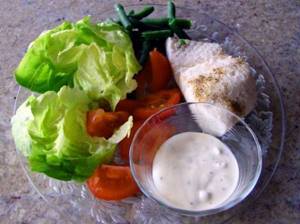
You will need
- Bay leaf
- salt
- black peppercorns
- parsley roots.
Instructions
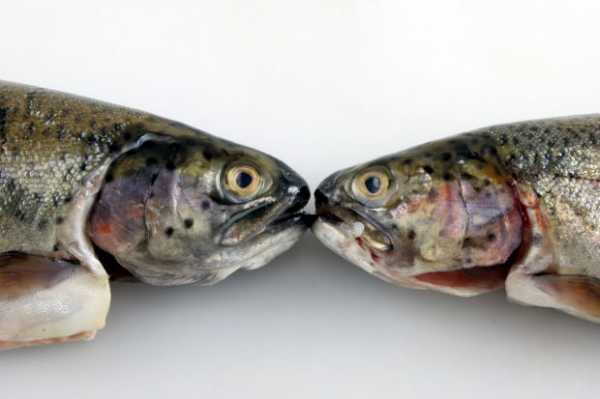
Pour some cold water into the pan, put the fish in it and put it on high heat. When boiling, the fire must be reduced.
note
There is no need to cook the fish for a long time; it will become tough and tasteless. You should not put fish in boiling water, as it may burst; it is better to put it in warm water. When choosing fish, you need to pay special attention to freshness. In this case, the gills should be red, the eyes and scales should be clean and shiny.
Helpful advice
When cooking fish, you should not pour a lot of water; the less, the tastier it will be. If you want to retain more nutrients in the finished fish, it is better to steam it. Do not pour out the broth; it will be quite useful for making fish soup or sauce. To clean the scales well, immerse the fish in hot water for 1-2 minutes.
www.kakprosto.ru
Steaming fish: recipe
To prepare aromatic and juicy steamed fish you will need:
- fillet of any fish - 700 g;
- soy sauce - 2 tbsp. spoons;
- several green onions;
- ginger root;
- olive oil.
Instructions:
- Fish fillets are washed under running water. Blot with a paper towel. Then put it in a container in which the fish will be cooked.
- Half the green onions are chopped into 3 cm pieces. The ginger root is peeled and cut into several thin slices. Onion and ginger are placed on top of the fish fillet. Place the container in a double boiler and cook the fish until done. How long does it take to cook fish? Above was information about the time, which depends on the type of fish.
- The remaining half of the onion is finely chopped. Grate the ginger root on a fine grater; you will need about 1 teaspoon. Pour a little olive oil into the pan and cook for 2-3 minutes. fry the onion with ginger, add soy sauce and simmer for a couple of minutes over low heat.
- Place the boiled fish on a plate and sprinkle with ginger dressing. Serve the dish with vegetable salad, potatoes or rice.

How long to cook fish
Like any seafood, fish does not tolerate prolonged heat treatment. It becomes tough, loses its taste and attractive appearance.
The cooking time for fish depends on its type and the size of the pieces:
- portioned pieces of sturgeon are boiled for 1 to 2 hours;
- the carp is cooked for 45 minutes, and if you cut it into pieces - 25-30 minutes;
- hake - 25-35 minutes;
- boil the salmon for 25-30 minutes;
- freshwater predatory pike is cooked for 20-25 minutes;
- flounder, cod, sterlet and herring will be ready after 15-20 minutes of cooking;
- pike perch, pink salmon and trout cook very quickly - 10-15 minutes is enough;
- catfish and capelin are even faster - 10-12 minutes;
- pollock and mackerel - only 5-10 minutes;
- and the record holder for the fastest cooking time is smelt fish: 5 minutes is enough for it to be ready.
You can determine the readiness of the fish by its fins. If they come off easily, then the fish is ready.
Calorie content of different types of fish
The calorie content and taste of ready-made boiled fish dishes depend on the original product. The proposed table clearly demonstrates the differences in nutritional value of different fish varieties.
| Fish | Protein, g/100 g | Fat, g/100 g | Carbohydrates, g/100 g | Calorie content per 100 grams |
| Tuna | 24.5 | 4.5 | — | 140 |
| Sea bass | 18.3 | 3.5 | — | 105 |
| Flounder | 15.6 | 3.2 | — | 89 |
| Vobla | 19 | 3 | — | 92 |
| Whitewing halibut | 19 | 3.3 | — | 105 |
| Ocean mackerel | 18.6 | 4.4 | — | 115 |
| Hake | 16.5 | 2.4 | — | 87 |
| Blue whiting | 18.3 | 0.9 | — | 83 |
| Pollock | 16 | 0.9 | — | 73 |
| Cod | 16.3 | 0.6 | — | 68 |
| Haddock | 17.5 | 0.5 | — | 74 |
| River perch | 18.6 | 0.9 | 83 | |
| Pike | 18.5 | 1 | — | 85 |
Based on the data, you can get enough of the same amount of protein as in meat, but with fewer calories.
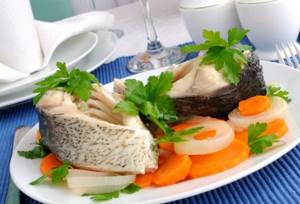
Lean fish contains less fat than most dietary meats
What can you cook
You can prepare various dishes from boiled fish. Don’t be afraid to experiment, because, having a certain neutral taste, fish can easily be combined with many foods: vegetables and flour products. If you decide to serve boiled fish as an independent product, then to add juiciness, it is recommended to use onion frying based on olive oil.
Some housewives even prefer to cook fish in oil, which ultimately resembles canned fish, but do not forget that such a dish is considered high-calorie. If you need to prepare a fairly satisfying and less calorie dish, we recommend using Polish sauce.
Procedure for cooking fish
To cook fish, it is gutted, cleaned of entrails and scales, gills are removed, cut into pieces and dipped in boiling water (to which salt and various seasonings are added in advance). The broth is brought to a boil again, and then the heat is reduced so that the liquid barely boils. Why does fish need to be salted right away? Adding salt prevents the product from boiling too quickly. An exception to the rule about adding salt is when boiling sturgeon with dense flesh: this fish does not boil over, but can lose too many nutrients in salt water. Thus, when boiling sterlet and large sturgeon, they are salted at the end of the process.
The cleaning process can be avoided if you buy already gutted specimens or fillets. Many people prefer to cook the fish under the lid in a small amount of water, which covers the pieces of fish only halfway - simmer. If the taste of the fish itself is not very rich, it can be improved by boiling it in vegetable or even chicken broth, in milk or in water diluted in half with milk. To improve the taste, you can add carrots, parsley and celery roots, and onions to the water. An alternative option is to add a little cucumber pickle, a little dill or fresh sweet pepper to the water. Bay leaves and pepper are added only to fish whose natural smell is not liked by the cook.
Steaming retains more nutrients and flavor in the fish. For fillets, it is highly recommended, since the skin does not protect it from the aggressive external environment. If you have not yet purchased a double boiler, then you can take a regular saucepan, pour a little water into it (about a 5 cm layer), bring to a boil, put a colander on top, put fish in it, salted and sprinkled with your favorite spices, cover the colander with a lid and wait end of the process.
If the taste of boiled fish seems boring to you, and you don’t have enough enthusiasm for experimenting with broth and seasonings, the ready-to-eat product can be supplemented with both store-bought and.
How to cook fish correctly
How to cook fish correctly so that it turns out truly tasty, how long it takes and how to choose it, we will consider in detail in this article.
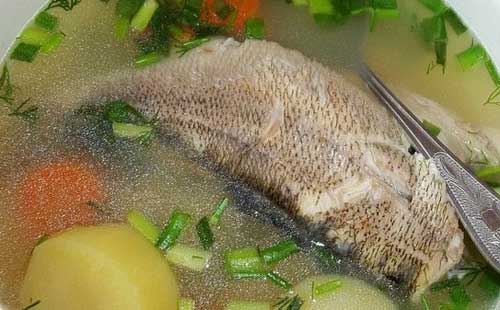
It just so happens that most of us do not enjoy boiled fish. And this happens because many do not know how to cook it correctly.
Possessing excellent qualities and remarkable properties, boiled fish can become a real delicacy on our dinner table. And for those who adhere to one or another diet, there cannot be a better dish!
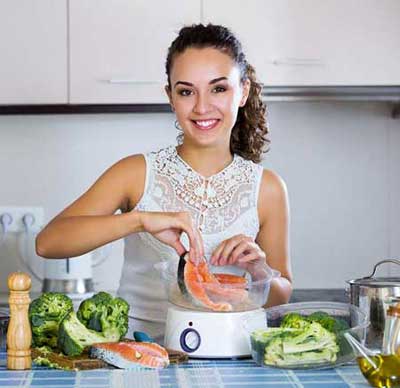
In order for the fish to be truly tasty, first of all, you need to know how to choose it correctly. Therefore, do not be lazy and read the article on how to choose the right fish. These simple rules can be useful to you for the rest of your life.
To make the fish cook faster, it can be cooked in small pieces, weighing 80-100 gm.
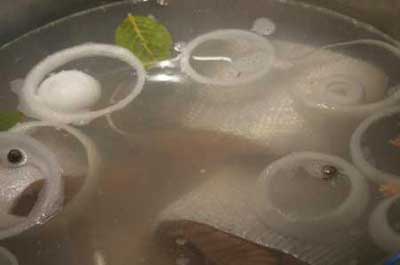
But it’s better if it’s one big piece, then the fish turns out juicier and tastier.
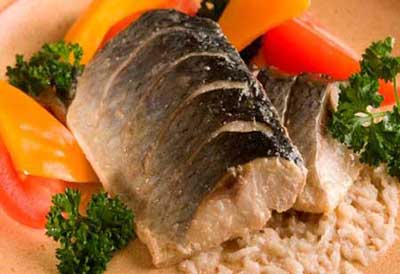
- Whole gutted fish with bones and skin or ready-made fillets should be cut at right angles into portioned pieces. To prevent them from changing their shape during cooking, a transverse cut should be made on the skin of each piece.
- We should not forget the “golden” rule - the less water the fish is cooked in, the tastier it becomes. You need to pour so much water into the pan so that it only slightly covers the fish, about one third.
- It is better to fill whole large fish with salted cold water. In this case, it will slowly warm up simultaneously with the liquid. And small portioned pieces need to be filled with hot water because they have time to boil quickly.
- In order to cook fresh fish, add one teaspoon of salt to one liter of water, one peeled and cut into small pieces, carrots, onions, parsley, bay leaves and a few (4-5) black peppercorns. Pieces of fish should be placed in the pan, skin side up.
- Sea fish that has a characteristic specific taste (catfish, cod, flounder, haddock...) is best cooked in a spicy broth, which I will discuss below.
- Sea fish will be less boiled and taste better if you add a small amount of vinegar to the water. It is better to cook fish that has a pronounced marine smell in a spicy broth or cucumber brine: for one liter of water take 0.5 liters of brine, one carrot, parsley, celery, one onion, two bay leaves, a teaspoon of salt, three peas of black pepper. Chopped carrots, onions and roots should be boiled for 7-10 minutes, after which add spices, salt and add cucumber pickle, strained through cheesecloth.
- To prepare a spicy decoction, for one liter of water take half a carrot, celery, parsley, one onion, one and a half teaspoons of table salt, one medium-sized bay leaf and three allspice peas. Chop the roots, carrots and onions, place in a suitable container, add cold water, bring to a boil, add the rest of the spices, add salt and boil for 7-10 minutes.
- For noble breeds such as salmon, sturgeon, eel, ... you should select seasonings that have a delicate taste. These include fresh champignons or porcini mushrooms, lemon juice, white grape wine, etc.
- You need to ensure that the water boils gently but continuously during cooking.
- To determine whether the fish is ready, you need to pierce it with a toothpick or other suitable sharp object in its thickest part. If the stick goes in easily and the juice released is clear, then the fish is completely cooked.
- The remaining broth can be used to make soup, and some of the broth can be used to make a wonderful tomato or white sauce.

- To cook salted fish, you need to first soak it, then add cold water and cook until done without adding salt.
- If hot boiled fish is served at the table, then a hot side dish is served with it. Cold boiled fish is served with salad, pickled beets, vinaigrette or cucumbers.
- It is advisable to serve fish sauce or horseradish with sauce for boiled fish. Onion, tomato or white sauce goes well with fatty fish. And for lean (not large, skinny) fish, a sauce with eggs, butter or sour cream is better.
- To make river fish safer for health, it must be cooked for at least 15-20 minutes.
- In order for the fish to acquire a beautiful golden hue and the broth to become more saturated in color, you need to add a little onion peel to the water.
- Before serving, boiled fish should be kept in hot broth. This way it will taste better and remain juicy.
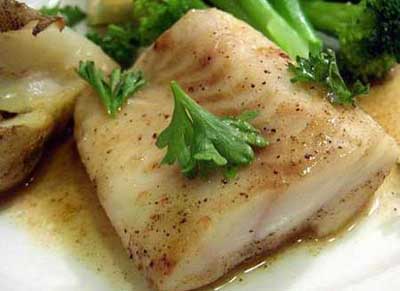
Cooking time for fish and seafood
This table shows the required cooking time for fish and seafood; try to save this page or print it so you don’t forget.
| PRODUCT | COOKING | FRYING | STEWING |
| Squid | 3 min. | 5-7 min. | — |
| Shrimps | 10-15 min. | — | — |
| Mussels | 7-10 min. | — | — |
| Cancers | 10-15 min. | — | — |
| Fish pieces (150-200 gm.) | 12-15 min. | 10-15 min. | poaching 10-15 min. |
| Sturgeon | 15-20 min. | — | poaching 15-20 min. |
| Fish large carcasses | 1-2.5 hours | — | — |
| Fish cutlets | — | 10-15 min. | — |
Goodbye, dear readers. If you found this article useful, share it on social networks with your friends. Let them know about it too and be grateful to you.
And, in order not to miss other interesting news, just subscribe to updates. I wish everyone good luck. Bye.
The nuances of boiling fish
Of course, when boiling bream, mackerel or some delicious type of fish, there are specific features and recommendations, but there are general nuances for preparing a boiled product:
- Products with a delicate, unexpressed taste are not recommended to be richly flavored with seasonings and spices. It is enough to put white roots (parsley, celery) into the broth and add salt to the finished dish.
- But bream, carp or silver carp should be seasoned with pepper, bay leaf, carrots and onions. The already rich taste of meat will become more spicy and pronounced.
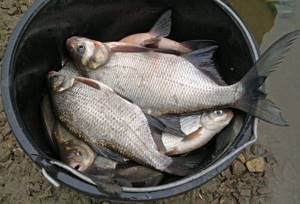
- Fish that initially has an unpleasant odor can be saved with cucumber brine. Just add a little liquid to the broth during the cooking process.
- If for some reason the finished product does not need to be served yet, it can be left in the broth, however, no more than half an hour.
The broth remaining after cooking the products can be strained several times until transparent, frozen and later used in making sauces. Just before pouring it into molds, you should add a little salt to the liquid.
https://youtube.com/watch?v=z703sIrBO1g%3Frel%3D0
Simple and tasty recipes for boiling fish
Boiled fish has a neutral taste and is easily combined with vegetables, dairy products, sauces, spices and herbs. To serve it yourself, you can cover pieces of boiled fish with onion-carrot frying or Polish sauce.
Pike perch with Polish sauce
The pulp, boiled in broth with white wine, will turn out aromatic and soft. Polish creamy egg sauce will perfectly enrich the taste of pike perch, while the calorie content of the dish will increase to 197 kcal/100 g. Required list of products: a couple of pike perch fillets (approximately 400 g), a large medium-sized onion, a couple of bay leaves, 100 ml of table white wines, 3-4 pcs.
allspice and black pepper, 1 tbsp. l. mustard seeds, optional salt. For Polish sauce you need: 3 hard-boiled eggs, 80 g 82% butter, 1 tsp. freshly ground black pepper and salt, 3 tbsp. l. finely chopped parsley or dill mix.
Preparation of the dish in steps: rinse the fillet thoroughly, peel the onion and carrots and cut into thin feathers. Add bay leaf with pepper and mustard seeds to the vegetables, pour half a liter of water over the ingredients. Boil the mixture, sprinkle with salt and cook for 20 minutes over low heat under the lid. Pour wine into the broth and continue cooking for 5 minutes.
Place the pike perch in a saucepan, pour in the cooked and strained sauce, and return to the heat. Boil the dish, cover with a lid and cook for 10 minutes. For the sauce, wash and finely chop the herbs, chop or grate the eggs, melt the butter over low heat. Mix all ingredients and season the sauce to your liking. Place tasty and tender pike perch on plates, pour cream sauce and sprinkle with herbs to taste.
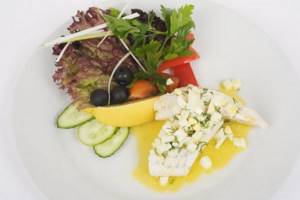
After boiling, it is better to leave the pike perch in the broth so that it turns out juicier
With vegetables and tomato sauce
Dietary boiled fish marinated with onions and sweetish carrots is a cold appetizer that will turn out bright, appetizing and piquant. The sauce is well saturated with juices, the pulp is juicy and spicy. Ingredients: 1 kg of defrosted pollock, 1 bay leaf, 4 onions and carrots, 4-5 tbsp. l. odorless frying oil, 3 tbsp. l. tomato paste concentrate, 2 tbsp. l. vinegar, salt to taste.
Stage of preparing a rich dish: rinse the pollock carcasses, divide into 3 parts, place in a container and fill with water. Place the pan on the stove, turn on low heat, and put a bay leaf in the water. Boil water and cook for 15 minutes over low heat. Catch the fish, cool the pulp and disassemble the pollock from the seeds and skin. Tear the meat into fibers.
Grate the peeled carrots on a coarse grater. Peel the onion, finely chop and fry in oil for 5 minutes. Add grated carrots to the onion and fry the vegetables until soft for 10 minutes. Add tomato paste to the vegetables and add salt to the sauce. Mix the vegetables and simmer over low heat for 7-8 minutes, add vinegar, and cool the fry slightly.
Place a layer of stewed vegetables in a bowl, then fish. Lay out all the products in layers so that the last layer is the vegetables. Cover the bowl with a lid and refrigerate overnight. The finished dish will be tasty, soft and juicy. It is best served cold with sliced vegetables or chopped herbs.
General recommendations
There is no clear technology for preparing boiled fish. And it is almost impossible to say how this is done correctly. Each housewife has her own cooking secrets: some use a mesh for this, others resort to a double boiler, and still others try to find a middle ground during cooking that allows them to avoid overcooking.
But we cannot ignore the basic requirement for the quality of the product: the fish must boil at least a little (for this it is better to use low heat).
It is necessary to plan your actions in the process of preparing the dish in question, starting from the desired end result (you are planning to make a casserole, separating the bones during boiling, you are pursuing the goal of getting a boiled fillet for a salad, or you need whole pieces of fish for dinner). If you still need whole pieces of boiled fish, then it is quite acceptable to put the fish in cold water. The main thing is that the fish is cut into fairly large pieces.
It is not recommended to cook small fish in this way, as they will begin to fall apart as soon as the water starts to heat up.
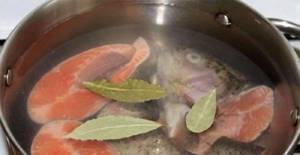
As for the amount of water, it should lightly cover the fish so as not to provoke preliminary boiling (a small amount of water provides the fish pieces with “rest”, due to this it is possible to avoid unnecessary deformation). Thus, it is possible to cook fish even with gills. But in the case of fish soup, this method will be unacceptable, and the gills will be superfluous. Here we immerse the fish either at the end of cooking or at the very beginning, but after boiling it a little, it will be necessary to completely remove it from the future broth so that it does not completely spread out.
General recommendations for cooking
There is no single technology for boiling fish. There are several secrets that allow you to balance between the necessary heat treatment and boiling the pulp. It is better to place fish cut into large pieces in cool water and gradually heat it to a boil. Small fish should be placed in hot liquid to prevent them from falling apart.
The water should only lightly cover the fish so that when boiling the liquid does not boil and the integrity of the pieces is not compromised. You can boil the carcasses with their heads, removing the eyes and gills. Fish cooked whole will turn out much tastier and juicier than when cut into pieces.
To prevent the carcass from losing its shape, 3-4 transverse cuts should be made on the skin of the back. To improve the taste of steaks, soaking the pieces for 3-4 hours in a marinade of wine, freshly ground black pepper and chopped onion will help.
The length of time it takes to cook fish depends on the size of the pieces and the carcass. The minimum time to kill parasites is 10 minutes after boiling for large steaks and 8 minutes for small ones. River carcasses take longer to cook, as well as specimens with the head, since in this place the fish have the greatest thickening.
Important! Sea cod should also be cooked for about 10-12 minutes, as its flesh can contain a lot of parasites.
Fish selection
Freshness of food is, of course, always important, but in the case of fish this rule doubles its strength. Any fish, if it is fresh, should not have an unpleasant odor, and the eyes should be bright, without clouding. The meat should be firm and not separated from the bones, and the gills should be pink. If you have not had the chance to catch red fish yourself and you choose it at the market, then keep in mind that fresh red fish should have pink mucus on its scales. The inside of the meat should be pink and without bruising. In addition to the above, it is worth considering that some fish are not entirely suitable for cooking. for example, you can cook it, but most likely the meat will fall apart.
Contraindications and harm
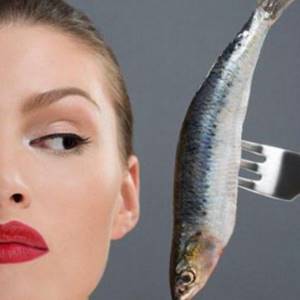
First of all, this applies to people with individual intolerance to this product, as well as people suffering from liver and kidney diseases. You cannot resort to this method of losing weight during pregnancy and breastfeeding. Even if a person does not have serious pathologies and believes that fish will not harm his health, in any case it would not hurt to consult a doctor first.

